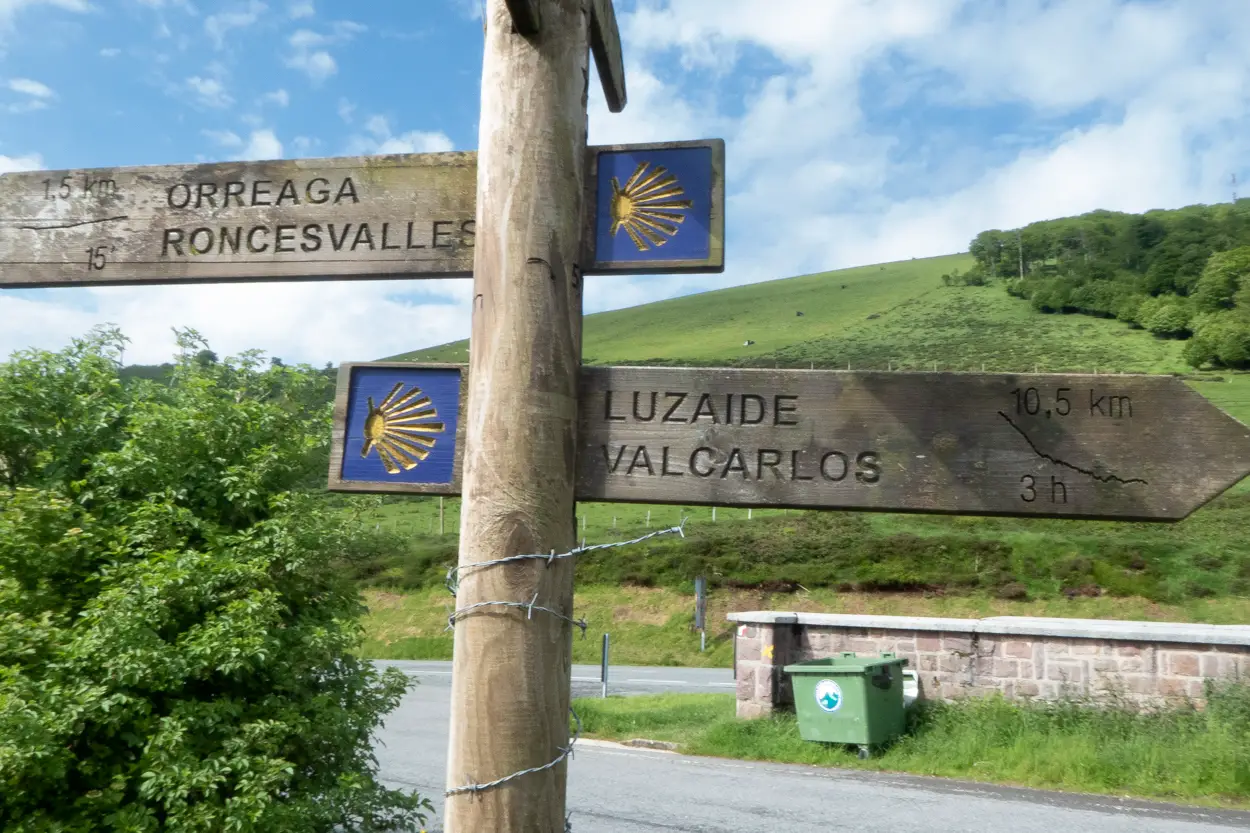Before I hiked the Camino de Santiago, I was convinced that it would be easy. After all, how hard could walking be? Let it be immortalised in writing… I was wrong. If you’re planning on walking the Way of Saint James and are looking for some Camino de Santiago tips, you’re in the right place.
Knowing what is in store makes it far easier to plan for your Camino journey. From training for the hike, to what to bring and staying healthy on the trail, it is all here. Essentially, I made all the mistakes so you don’t have to! These Camino de Santiago tips will tell you everything you need to know to successfully complete your pilgrimage. Buen Camino!
Read more: (opens in new tab)
- Camino de Santiago Packing List for Women
- A Guide to the Camino Shell Symbol
- Things That Surprised Me About The Camino
29 Tips for Walking the Camino de Santiago
1. Choose Your Route Carefully
I am a big proponent of not knowing whether you can do something and deciding to give it a go anyway. You’ll wait forever if you keep making excuses (too old, too big, too unfit, too expensive) so seize the day and do it now!
That said, you should put some thought into planning your adventure. The many Camino routes all differ in length and difficulty, making some more beginner-friendly challenges than others. You should also account for how much time you have on the trail. For example, if you only have a week and want to complete an entire Camino route, you should choose something like the Camino Inglés (110 km) over an alternative like the Camino Francés (790 km).
2. Plan for the Season
Bear in mind that the time of year that you do the Camino will influence the things that you need to pack. Winter weather can be harsh and you will need to prepare for the wind and the rain if you choose to take on El Camino this time of year.
Most people hike the route during the summer months, followed by spring and autumn. Many of the albergues close out of season so this is not a popular time to walk the Camino.
3. Do Sections if You’re Short on Time
Some of the Camino routes are long and many people do not have the luxury of taking multiple weeks off work. If this applies to you, don’t worry – you can still have a Camino adventure! Simply break up your Camino of choice and do sections of it. Some people complete the longest routes over a period of years!
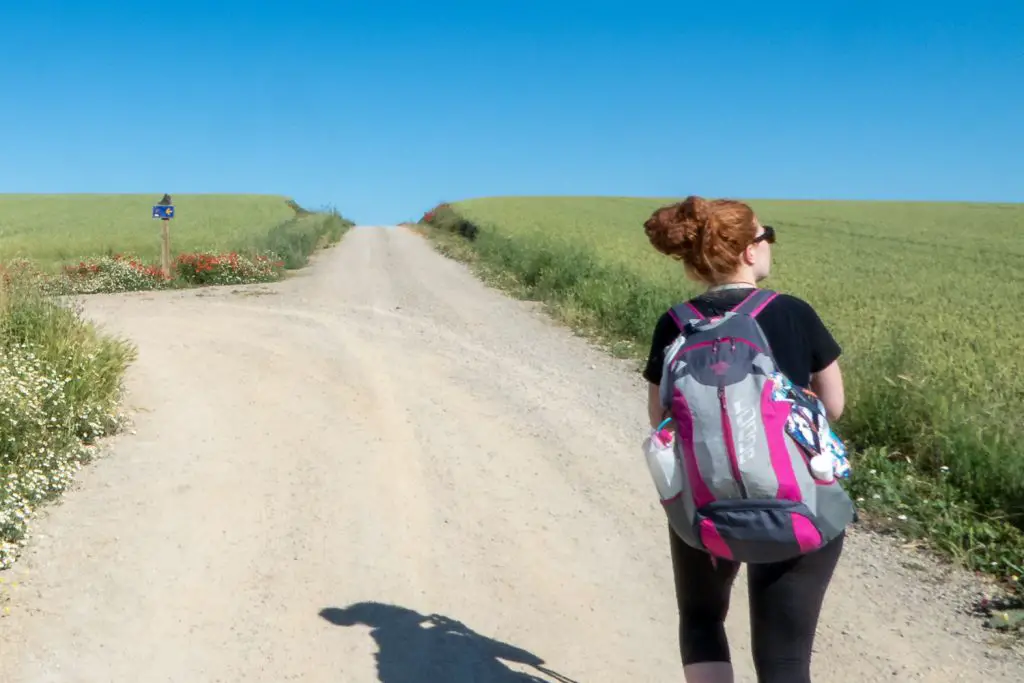
4. Prepare for Bad Weather
Even if you are walking the Way of Saint James in the summer months, the weather can catch you out. Make sure you pack for rain and wind, as well as the scorching Iberian heat! When packing, opt for lightweight clothing items over bulkier items and if you can get a packable version of something, do it!
5. Invest in the Right Gear
You don’t need to drop hundreds of dollars on gear but it is good to invest a little. Low-quality kit might be kinder to your wallet initially but it is likely to need replacing much quicker, making it more expensive in the long run.
Opt for reputable brands whenever possible and look for products with a favourable guarantee. When you take on this kind of physical challenge, you’ll very quickly realise that you need to grab your comfort where you can and that starts with what you’re wearing!
6. Train
It is very important to make sure that you have at least some hiking experience under your belt prior to undertaking the Camino. Ideally, you will want to do some long hikes over consecutive days but if this is not possible, a few regular 5 miles+ walks will certainly help.
I’ll be honest, I massively underestimated the Camino de Santiago before I did it. My ‘training’ was pretty much walking to the beach with a bottle of wine in my bag… a lot of fun but probably not the best way to prepare for walking 500+ miles.
7. Break in Your Boots Before
This piece of advice goes for any hike you’ll ever do. Always break in your boots before you begin the trail. This will help you get to a comfy point with your shoes and also helps to avoid blisters on the road.
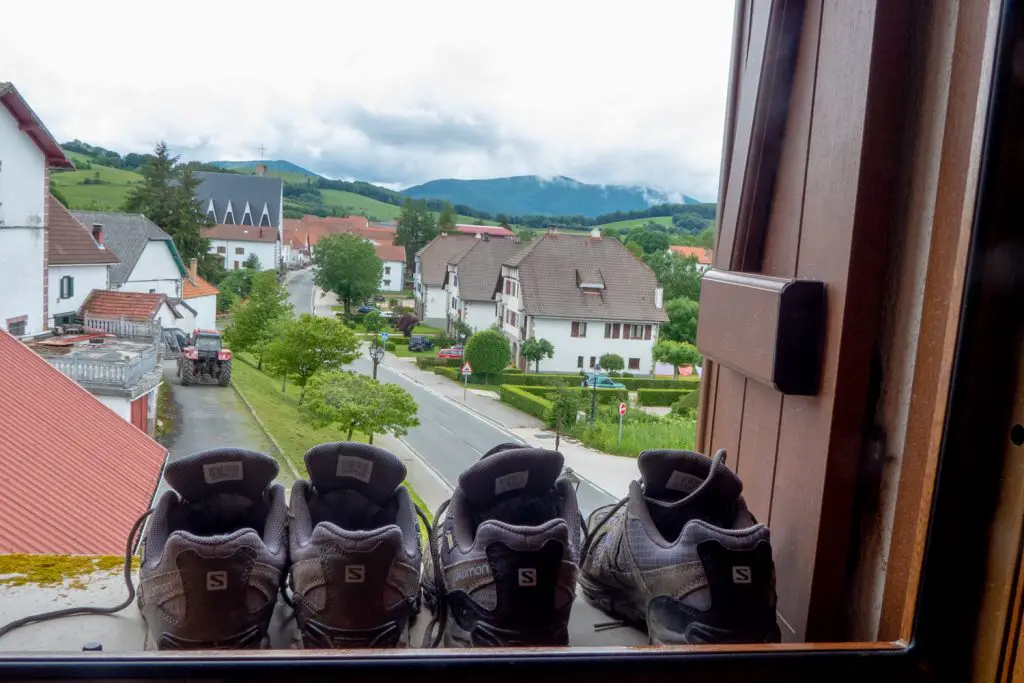
8. Grab a Guidebook
Some of the more popular Camino routes such as the Portuguese Way are well marked so a guidebook may not be strictly needed. However, knowing how to break up the stages of each part of the hike can really help you plan your journey.
A good guidebook will include a list of the local amenities as well as a collection of the accommodation options for pilgrims. The book that you purchase will vary depending on the Camino that you plan to do, however, all of John Brierly’s books are excellent and come highly recommended.
9. Pack Light
Savvy packing makes life much easier on the Camino. After all, you are likely to be carrying everything that you need on your back!
Try to bring clothes that you can layer up and look specifically for outdoor clothes which are lightweight. Not only is a light bag way easier to sort through and organise but it’ll also be much more pleasant to carry.
Camino Packing Tip! The weight of your backpack should not exceed 10% of your overall body weight.
10. Buy Your Pilgrim Passport
Your pilgrim passport (also known as your Credencial del Peregrino) is one of the most important things to bring on your journey. It can be purchased at the start of your route and is proof that you are walking the Camino. It entitles you to stay in pilgrim accommodation and eat pilgrim meals en route.
You must collect at least two stamps per day from churches, accommodation and other official sites as well as walk a minimum of 100km to be eligible for your Compostela. This will be documented in your Pilgrim Passport which you will need to present upon your arrival in Santiago de Compostela.
11. Begin Early
If you’re walking the Camino de Santiago in the summer months, it will get very hot. Therefore, you should aim to leave your accommodation between 5 and 6 am. This means you will have already done a lot of walking before the sun rises too high in the sky. It also means you’ll miss the bulk of the crowds on the route. Win-win!
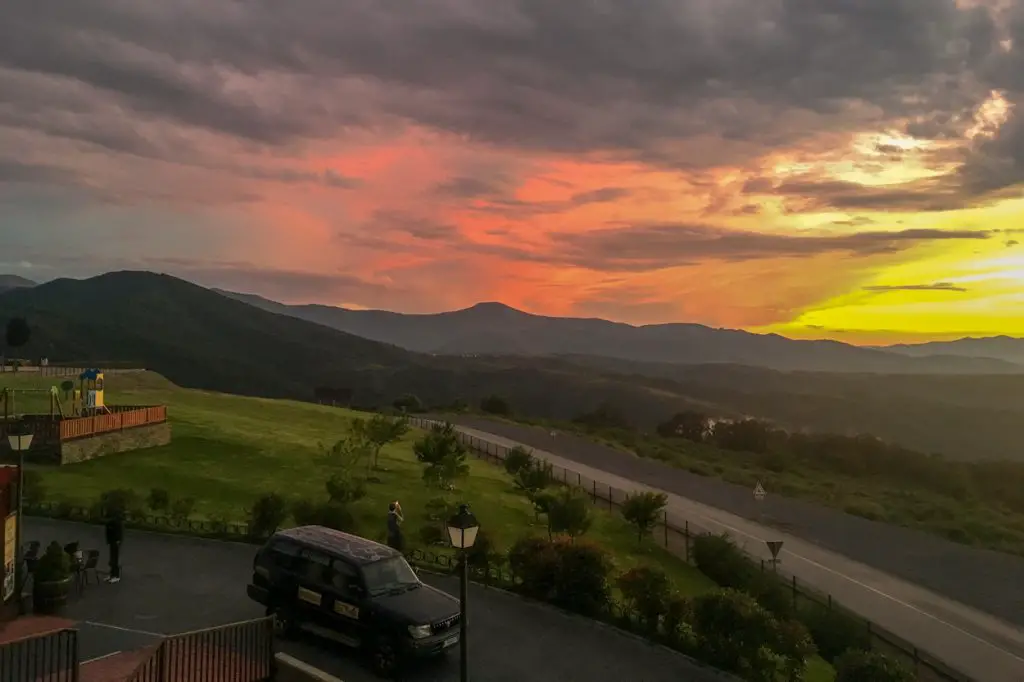
11. Start Slow
Chances are you have invested in a guidebook to break down the different stages of the Camino and you plan to stick to it rigidly. I would tell you to approach this method with caution.
Many of the people who participate in the Camino de Santiago are not experienced hikers and even those who are, are likely to find the hike challenging. If you start from St Jean Pied-de-Port, the first couple of recommended guidebook stages are very challenging.
Instead of jumping straight into 20km days, split the stages and allow your body to acclimatise to your new active lifestyle. This prevents injury and helps you settle into a routine without too much pressure.
12. Hike Your Own Hike
When you first start on your Camino journey, it can be tempting to try and keep up with the people around you. Don’t compare yourself to others. So what if you’re a bit slower? At the end of the day, the race is long but it is only with yourself. (Credit to Baz Luhrmann for these wise words.)
By removing peer pressure from the equation, you are much less likely to get injured en route and are far more likely to end up enjoying the whole Camino experience.
13. Stick to a Budget
The sheer volume of incredible local food and cheap wine on offer throughout the Camino can make it very difficult to stick to a daily budget. If you can be disciplined with your spending, it is well worth it. Sticking to a budget allows you a financial buffer in case you get injured along the journey or fancy splashing out on a nice hostel once in a while.
The Trail Wallet phone app is great for tracking spending and allows you to set budgets, as well as log your day-to-day spending.
14. Arrive at Municipal Albergues Early
One of the wonderful things about the Camino de Santiago is that many of the hostels along the way are in part funded by the government. They are often very large with a lot of bunk beds in the same room, making them crazy cheap; usually around €6 per night. However, this competitive pricing means that they also fill up quickly. As they are first come first served, you should always arrive early if you want to secure a spot.
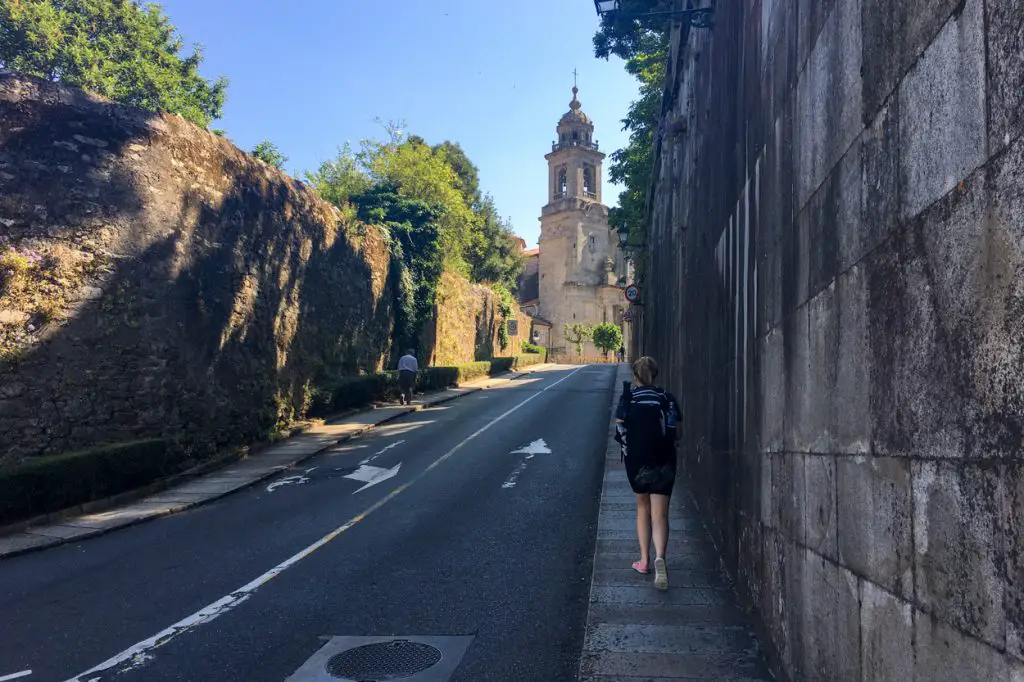
15. Stretch Regularly
When I first did the Camino, I did not heed this valuable tip and the result was tight muscles, cramps and tendon pain. Trust me when I say that it is really important to warm up your muscles before you start trekking and also to do a few cool-down stretches at the end of the day.
Stretching helps to keep your body flexible which in turn minimises stress on tendons, muscles and ligaments. Repetitive movement is the enemy so do what you can to limit any negative physical side-effects.
16. Make Sure You Eat Enough
In my experience, hiker hunger is a very real thing and by gosh, it has an appetite. I am a big foodie and fulfilling the above tip was not something that I struggled with, especially with all the mouthwatering food on offer in France and Spain!
During my big walking days, I was burning nearly my entire daily calorie allowance. Therefore, I had to double my food intake to continue at the same pace. Make room for breakfast, second breakfast and elevenses as the Camino will essentially turn you into a Hobbit. It is amazing how much food you can put away when you’re hiking day after day!
17. Wear Sunscreen
The exposure on the Camino is ridiculous and you will often find yourself walking throughout the hottest parts of the day. Purchase a cream with a high SPF (I opt for 50SPF at least) and reapply every couple of hours. Bear in mind that you can burn anywhere and that includes your hairline, the tops of your ears and definitely your lips! A lip balm with a high SPF factor will help to prevent the latter.
18. Talk to People
As a huge introvert, this is unusual advice coming from me. However, it really is true what they say, the people make the Camino.
I met countless amazing and inspiring people walking the Way of Saint James, some of which I have continued to stay in touch with over the subsequent years. Sharing an experience like the Camino is likely to bond you in a very intense way. You never know, you may just make friends for life!
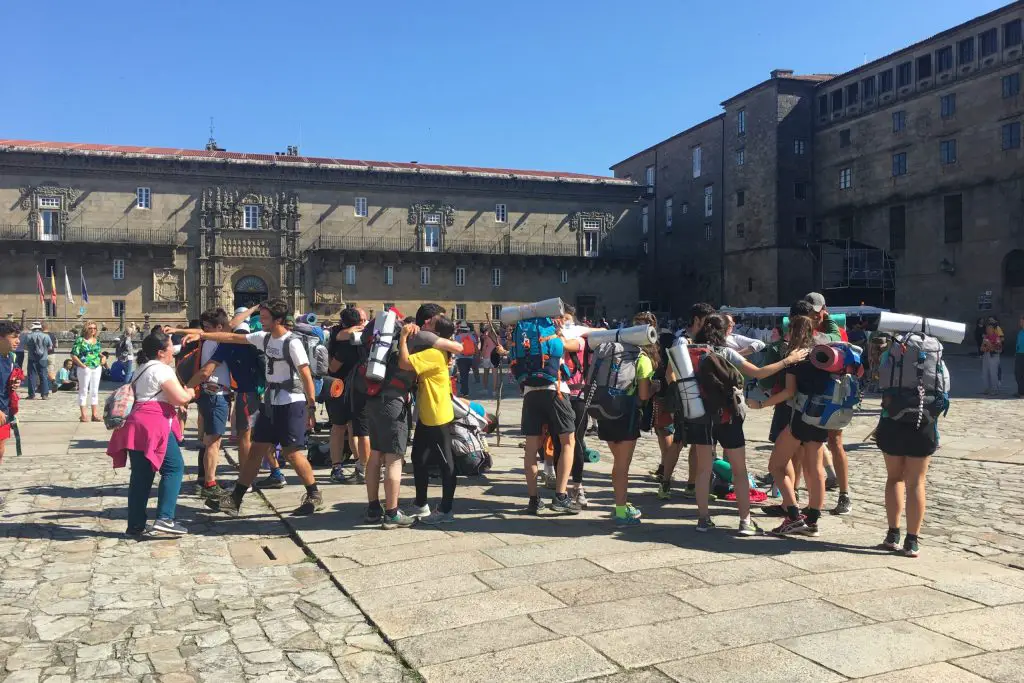
19. Bring Earplugs
Unfortunately, when 40 people are crammed into one room, the odds of one of them being a loud snorer is high. Sleep is imperative to performance and wellbeing on the Camino so use ear plugs when required to ensure a good night’s sleep.
20. Take Care of Your Blisters
I walked around 350km before I got any blisters. But, when they came, they came with a vengeance!
Blister care can be quite a divisive topic on the Camino but I found that the best way to manage them was by popping the blisters when they become white with a sharp needle (sterilised) and cutting the remaining dead skin away with scissors.
After that, you should clean the area regularly with antiseptic lotion and leave the blisters uncovered at night to dry out. Compeed blister plasters will quickly become your best friend so stock up on these before you start your Camino. You will need to use them throughout the day to cushion the blisters and prevent anything nasty from getting in.
21. Don’t Get Too Boozy
On the Camino, your alcohol intake will inevitably increase. The Spanish make no differentiation between bars, cafes and restaurants and they all serve alcohol around the clock so temptation is everywhere. With wine clocking in at €0.70 a glass in many places, it is likely you will get carried away every now and then. Make sure you carry rehydration sachets and remember to drink gallons of water.
Also, take this as your warning… walking with a hangover is not fun.
22. Watch Out for Bedbugs
Hostels along the Camino prevent the vast majority of bedbugs through the use of plastic sheets and disposable bedding. However, we all get caught out from time to time. No matter whether you’re staying in hostels or hotels, these grim critters can hide anywhere.
If you do find bedbugs, blast all of your clothes in a dryer to kill any that have made their way into your things. Be warned, the bites can itch for days and sometimes the infestation can be so bad that you’ll have to replace all of your clothes. Read up on the NHS signs and symptoms page so that you know what to look for.
23. Carry Cash
The Camino de Santiago is a very cash-heavy pilgrimage. Many of the albergues won’t take card payments and donitivos (donation-based accommodation options) run exclusively on cash. As well as these, there are plenty of honesty shops along the route with goods that you’ll need small change for. To make sure you don’t miss out, make sure you carry both euro notes and coins.
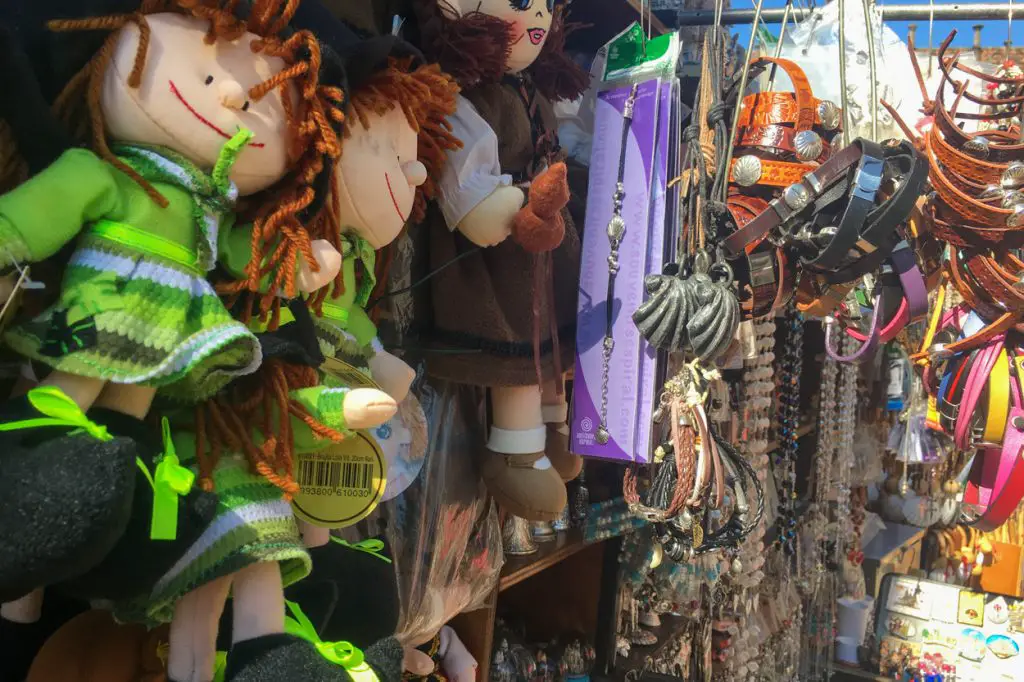
24. Refill Your Water Bottle
It should not be news to anybody that single-use plastic is ruining the environment. Do your bit for the planet and refill your water bottle using the provided pilgrim fountains along the route. As they provide clean drinking water for free, there really is no excuse for buying bottled water.
Also read: How Much Water Do I Need For Hiking?
Extra Camino Tip! A collapsible water bottle is a great idea because it can be packed down really small and stowed away when not in use!
25. Listen to Your Body
If you’re reading this article, chances are that you won’t have done anything like walking the Camino before. Your body will be unpredictable and the emotional effects of this can be huge. If you feel exhausted, take a day off.
It is always better to have a few rest days than injure yourself and need to take a prolonged period off or worse still, pull off the trail entirely. To get the most out of your Camino, you’ll need to look after yourself.
26. Learn Some Spanish (and/or Portuguese)
No matter where you travel, you should always make the effort to learn a little of the local lingo. Not only does it make your own life much easier but it is also appreciated by the locals that you’ll meet along the journey. You don’t need to be a master, even a few basic phrases will get you a long way.
27. Walk Further Than a Stage End
Most pilgrims will be reading the same guidebooks and following the same route. Therefore, people are likely to start and end stages in the same places. In peak season, this can mean that competition for accommodation is fierce in these towns.
To avoid competing with too many people for a bed, instead break your stages differently, travelling a town beyond the stage end or stopping a town earlier. This usually results in less competition for the limited accommodation options.
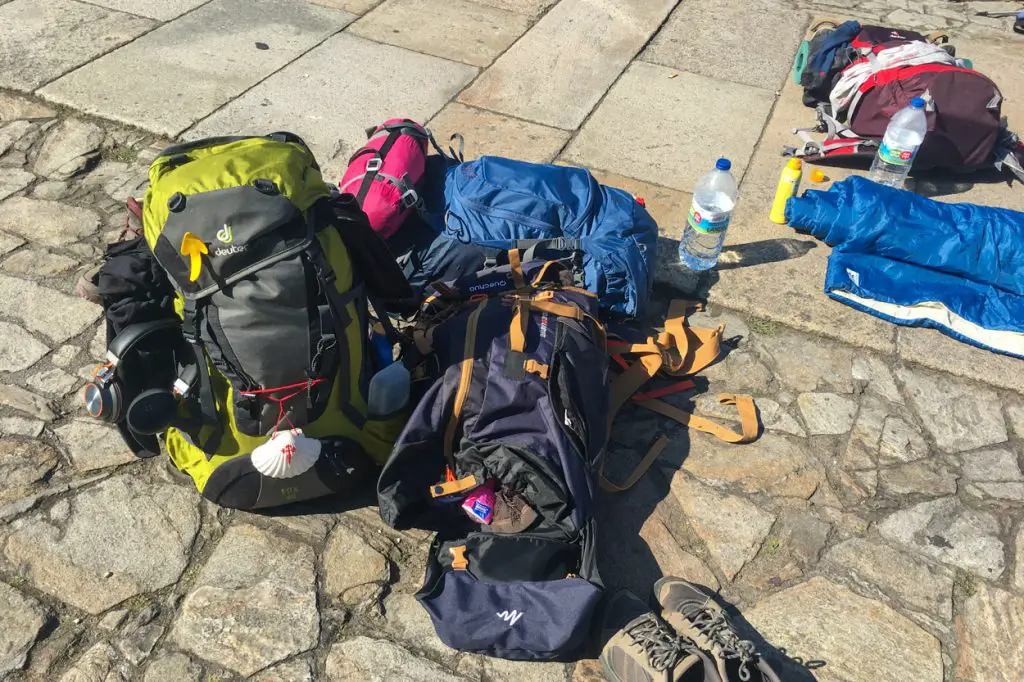
28. Document Your Journey
Walking the Camino de Santiago can be a magical and even life-changing experience. Many people find that they want to document the journey. No matter whether you have a blog, podcast or are simply keeping a journal, this keepsake is likely to be something that you look back upon fondly in the future. And who knows, maybe it’ll be the basis for your own Camino book someday?
29. Embody the Spirit of the Camino
Ask anybody who has ever walked a long-distance hiking trail and they will tell you stories of trail magic. Essentially, trail magic is acts of unexpected generosity that happen while you’re on the Way. On a bad day, these pick-me-ups become really important and truly reaffirm the world’s beauty.
If you are walking the Camino, you too should do your best to embody the spirit of the walk. Help those who need it, be generous when you can and take disruptions in your stride. Your Camino journey will be all the better for it.
Have you done the Camino de Santiago? Have I missed any of your top Camino tips?

